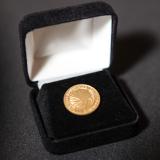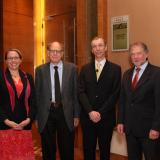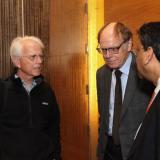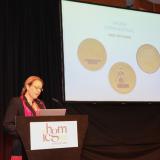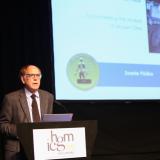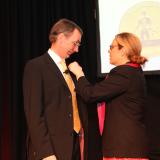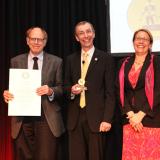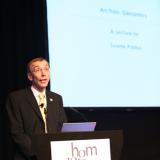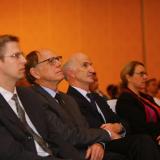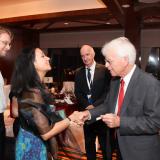2013 Gruber Genetics Prize
2013 Genetics Prize Recipient
Laureate Profile
In the early 1980s, Svante Pääbo was pursuing a PhD in molecular genetics at Uppsala University in Stockholm, Sweden, when his childhood fascination with Egyptology led him to ask a tantalizing question: Was it possible to obtain DNA from archeological remains? At the time, scientists did not know if ancient DNA could be isolated and sequenced. Pääbo decided to try. In 1985, he published his results—the demonstration that DNA survived in the cell nuclei of a 2,400-year-old mummy of an infant boy—in the journal Nature.
That remarkable accomplishment landed him a postdoctoral position in the laboratory of the late evolutionary molecular biologist Allan Wilson at the University of California, Berkeley, where he was soon extracting mitochondrial DNA (mtDNA) from a 7,000-year-old human brain and from several extinct creatures, such as mammoths, giant sloths, and marsupial wolves. Among the discoveries this research revealed was the finding that moas, the giant flightless birds that were hunted into extinction on New Zealand about 500 years ago, are more closely related to Australian emus than to kiwis, the flightless birds that populate New Zealand today.
In 1990, Pääbo returned to Europe to become professor of general biology at the University of Munich, where he focused his research on the development of methods to study ancient DNA and applied his approach to Neandertals, humans’ closest extinct relative. Using fossilized specimens from a German museum, he successfully sequenced mtDNA from a Neandertal upper arm bone. That achievement, which was published in the journal Cell in 1997, is considered a major milestone of evolutionary genetics.
Since 1997, Pääbo has been director of the Department of Genetics at the Max Planck Institute for Evolutionary Anthropology in Leipzig. There he has led the challenging effort to sequence nuclear DNA from the Neandertals. In 2010, he and his colleagues at the Institute published a draft sequence of that genome, along with the startling finding that up to 4 percent of the DNA in present-day humans comes from Neandertals. His team also used sensitive techniques they have developed to analyzed the DNA from a tiny bone fragment found in a Siberian cave and concluded that it came from a previously unknown hominin group that had once roamed the Earth. They called this hominin Denisovans, after the cave in which the bone had been found.
Pääbo has also investigated the genetic relationship between humans and great ape populations, particularly how differences in gene expression evolve. He has identified and studied the function of genes critically important in the evolution of the human species, such as FOXP2, which is associated with language development.
Citation
The Gruber Foundation proudly presents the 2013 Genetics Prize to Svante Pääbo for pioneering the analysis of ancient DNA.
Prior to Dr. Pääbo's research, scientists vacillated between defeatist and overly exuberant views of the feasibility of sequencing DNA older than a few hundred years. Through painstaking development of new methods for handling, extracting DNA from, and sequencing ancient samples, Dr. Pääbo determined whole-genome sequences from fossils as old as 80,000 years.
The ancient DNAs analyzed included the genomes of Neandertal and Denisova, extinct relatives of contemporary humans. Dr. Pääbo's studies established that although early humans and these extinct relatives were contemporary inhabitants of Europe and Asia, they last shared a common ancestor hundreds of thousands of years ago.
Strikingly, Dr. Pääbo's research demonstrated that certain segments derived from Neandertal and Denisovan genomes are found in modern humans, providing evidence of early interbreeding of these populations. His studies were a technological tour de force, opened new windows into the distant past, and provided fundamental insights into our origins.





